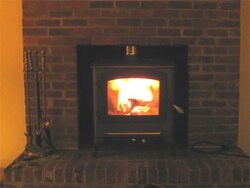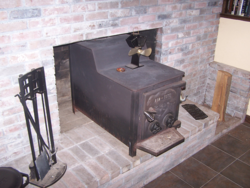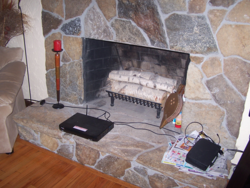We are considering adding an insert or stove in the upstairs fireplace (have old non-EPA wood stove beast in lower level of raised ranch/split level). The new stove wood be in the living room and tasked with heating the upstairs (1350 sq. ft.). It would either be an insert or free standing stove in (or in front of) masonry fireplace. We intend to use the existing chimney (with appropriate liner and pro install).
Questions: What's the difference, aside from aesthetics, between an insert and freestanding stove in terms of heat output, heat control, etc.? Can we have a freestanding wood stove on the hearth (or in the existing fireplace) and still use the existing chimney flu (trying to avoid putting a stove pipe through the cathedral ceiling)?
Regardless of which we go with, none of the options are designed to heat exactly 1350 sq. ft. Therefore, do we go with smaller (1200 sq. ft.) or larger (1800 sq. ft.) insert/stove designs, keeping in mind that we will have some heat rising from the beast in the lower level and we have cathedral ceilings (ceiling fans are in place). House was built in late 70s, but has new windows, doors, and attic insulation. It's fairly tight, not too drafty. I'd like to keep the LR around 70-72, bedrooms down the hall can be cooler (68-ish).
Questions: What's the difference, aside from aesthetics, between an insert and freestanding stove in terms of heat output, heat control, etc.? Can we have a freestanding wood stove on the hearth (or in the existing fireplace) and still use the existing chimney flu (trying to avoid putting a stove pipe through the cathedral ceiling)?
Regardless of which we go with, none of the options are designed to heat exactly 1350 sq. ft. Therefore, do we go with smaller (1200 sq. ft.) or larger (1800 sq. ft.) insert/stove designs, keeping in mind that we will have some heat rising from the beast in the lower level and we have cathedral ceilings (ceiling fans are in place). House was built in late 70s, but has new windows, doors, and attic insulation. It's fairly tight, not too drafty. I'd like to keep the LR around 70-72, bedrooms down the hall can be cooler (68-ish).






 We are considering an Englander as well.
We are considering an Englander as well.
